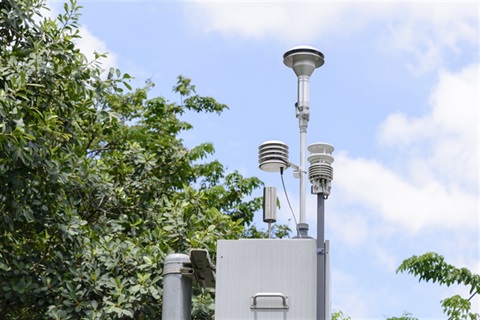Understanding Weld County’s Ozone Monitoring: A Three-Year Milestone
Published on September 05, 2024

Since 2021, Weld County has been collecting ozone data at three strategically placed monitoring stations—Missile Site Park in western Weld, Hereford in northern Weld, and Orchard in eastern Weld. The goal of these monitoring stations is to track changes in ozone over time, use the data to inform air quality policies, and contribute valuable data to the Ozone State Implementation Plan, ensuring that Weld County residents breathe cleaner air.
The Significance of Three Years of Data
Why is three years of data so important? The U.S. Environmental Protection Agency (EPA) uses a specific metric to assess air quality against federal standards, called the "design value." This value is calculated from a three-year average of the annual fourth-highest daily maximum 8-hour average concentrations of ozone. Essentially, this metric allows for up to three measurements exceeding the ozone standard limit per year. If a fourth exceedance occurs, that site is in violation of federal air quality standards.
The Science Behind the Monitoring
Each of these monitoring stations does more than just track ozone levels. They collect crucial weather data, including wind speed and direction, humidity, temperature, and precipitation, which all play a role in ozone formation. At Missile Site Park, the monitoring is even more comprehensive, including measurements of Nitrogen Oxides (NO, NO2, NOx) and volatile organic compounds (VOCs), both of which are key precursors to ozone. And ammonia (NH3) gas to better estimate total nitrogen inputs to ecosystems.
Key Findings from the Data
- 1-A Decline in Exceedances: The data collected shows the number of days exceeding the 70 parts per billion (ppb) ozone standard has declined since a peak in 2021. That year was particularly challenging due to high wildfire smoke and extremely hot and dry weather, conditions that are known to boost ozone production.
- 2-Eastern and Northern Weld Meet Federal Standards: A comparison of the design values from 2021-2023 reveals that the Orchard and Hereford stations in eastern and northern Weld County are in compliance with the strictest federal ozone standards. This is a significant achievement, especially when compared to other monitoring sites in the Northern Front Range ozone nonattainment area.
- 3-Higher Ozone Levels in Western Weld: The data also indicates that the Missile Site Park station in western Weld County consistently reports higher ozone levels compared to the northern and eastern stations. While 2021 was a difficult year across the board, with all stations recording high ozone levels, 2022 saw a significant reduction. However, even with these improvements, the Missile Site Park station did not meet the 2015 ozone standard until 2023, which saw much more favorable weather conditions.
Ongoing Efforts and Challenges
Recognizing the public health implications of ozone pollution, Weld County has been actively involved in meetings and working groups aimed at reducing ozone levels. During the last legislative session, Weld County collaborated with Senator Barbara Kirkmeyer on Senate Bill 24-095, which proposed approaching ozone reductions through incentive programs targeting the repair of high-emitting vehicles, promoting the electrification of small lawn and garden equipment, and providing more grant funding for clean local government fleets. The bill also called for implementing regular photochemical modeling to evaluate the effectiveness of ozone reduction strategies. Despite broad support in the Senate, the bill was narrowly defeated in the House Finance Committee due to political factors unrelated to its substance.